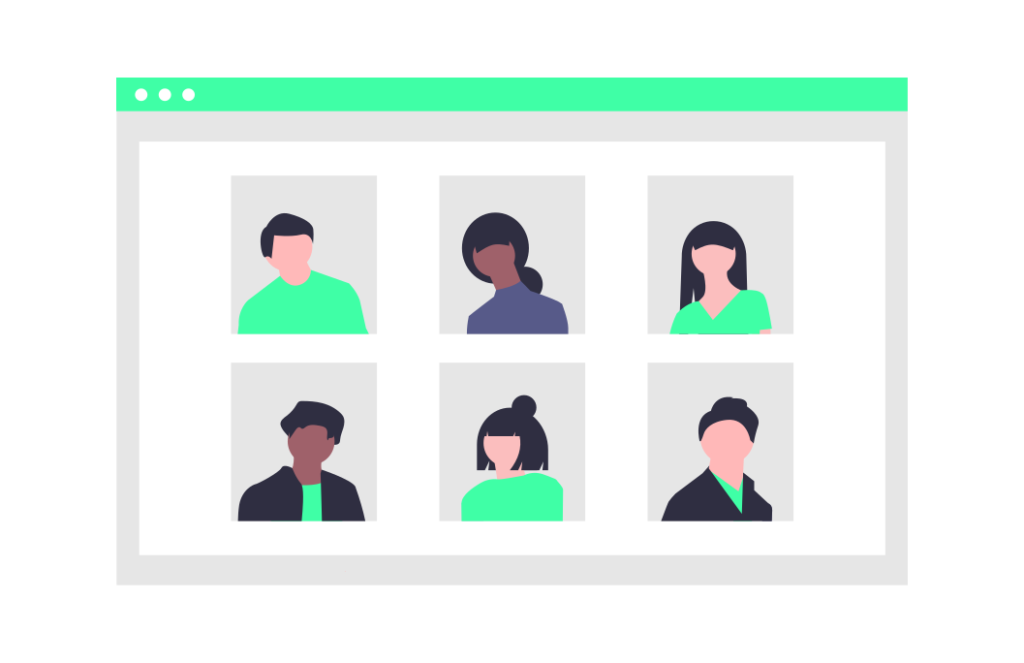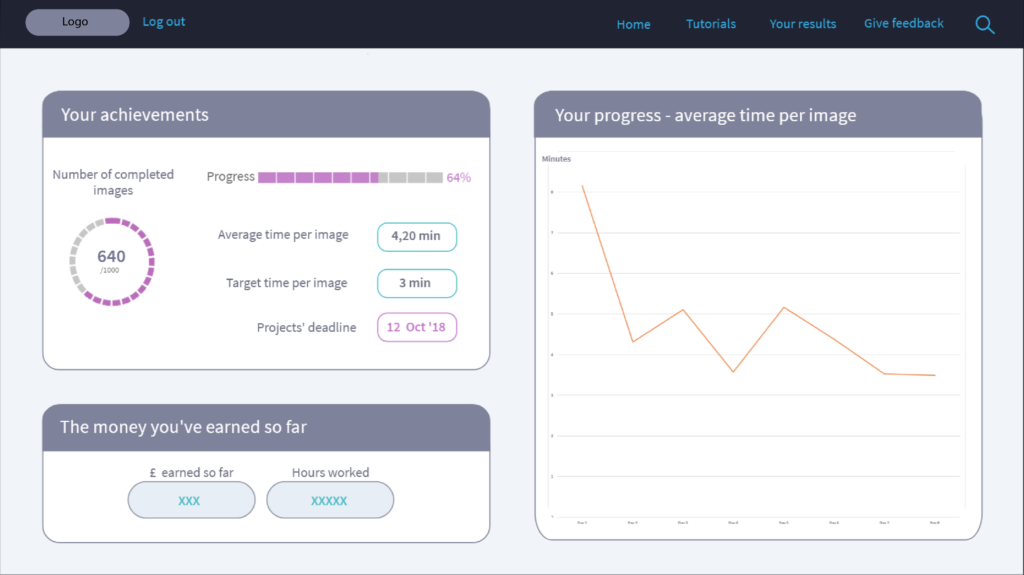| About the Company | About the Product |
| About the Users | UX Research / Design Activities |
| Usability Testing | Persona Creation |
| User Interviews and Surveys | User Frustrations and Solutions |
| Prototyping | Conclusions |
About the Company
In July 2018 I started cooperation with a tech startup (in stealth mode) in the AI space. The company was founded in 2018 in London by an Investment Banker whose main goal was to create algorithms which would be used in the real estate sector.
I was really keen on learning as much as possible. Our team was small (up to 10 people), therefore, there was always plenty to do. I spent the first few weeks on getting to know the product and developing UX / UI skills (e.g. Adobe XD CC, Illustrator) & got the chance to create my first prototypes and wireframes.

About the Product
One of the goals of the business was to generate high-quality data for AI and deep learning applications. In order to fulfil this need, we created an online platform for micro-tasking / microwork.
We were working on an exciting and challenging project in collaboration with real estate companies at that time.
My main objective was to help out in making the platform more user-friendly by:

- Conducting UX Research activities
- Creating Prototypes and Wireframes
- Working on UI elements
- Training and coordinating a group of platform users
About the Users
We recruited the users (our remote workers) mainly via Upwork. Who were they?

Living in South East Asia and Central / Eastern Europe, students, mothers, people in their 20s-50s looking for new opportunities and extra money; with communicative English and access to Internet / computer.
They were trained by me and supported during the whole process (via Skype).
UX Research / Design Activities
Given both, time & budget limitations, in line with the business goals – to generate data in a short period of time for low cost, I decided to minimize changes in our product and came up with a few simple prototypes.
These Prototypes were built on the results from the following UX Research and UX Design Techniques:

- Expert Usability Testing
- Remote Usability Testing
- Surveys
- Persona Creation
- User Interviews
- Prototyping
Usability Testing
Expert Usability Testing. In order to improve the first version of our platform, I spent five days using it, facing all the difficulties and challenges and noting all these issues – pain points – together with possible solutions (ideation). I discussed and share my observations with the Company Founder who also went through an Expert Usability Testing.
Remote Usability Testing. I conducted 1- hour-long sessions (via Skype) with 16 remote workers who were completing microtask on their computers and commenting, asking questions as well as giving feedback. Before viewing the platform users read the instructions (‘How to use the platform’) and had the opportunity to ask questions.

Here are examples of the Usability Testing TASKS and Questions:
‘Draw/find all the objects (object name)’
‘What would you like to add?’
‘What is your first impression?’
After the Usability Testing, I have identified patterns and summarize users feedback and compared / combined these findings with the results from Surveys and User Interviews (described below).
Persona Creation
Based on the information gained during the recruitment process and the Usability Testing I have created a Persona.
‘Personas – fictional characters drawn from user research who serve as example cases during the UX development‘. J.J Garret ‘The Elements of UX’.

User Interviews and Surveys
The goal of the User Interviews and Surveys was to gain feedback about our platform, to identify issues / difficulties users were facing while using our platform.
The anonymous SURVEY (consisting of 10 questions) was sent to 16 users (Survey Monkey; 15 completed). Here are two examples of the survey’s questions:
In a scale of 1-5 how difficult was to use the platform?
What would you change in our platform?
The User INTERVIEWS were conducted via phone or Skype, lasted 30 minutes and were based on an unstructured conversation about users’ experience of using the platform; Conducted with 4 users who have been working on the platform for 4-6 weeks.
User Frustrations and Solutions
During the above research activities (User Interviews, Usability Testing, Surveys), I observed 3 main issues / user frustrations and suggested the following solutions:
Recognised issues and recommendations (solutions):
- Issue 1: Difficult to understand and too technical language e.g. ‘batch xxx – OCR verification’
- Issue 2: Repetitive tasks causing boredom
- Issue 3: Often mistakes made by the users with no options to go back

- Solution for Issue 1: User – friendly language: different wording e.g. ‘Labelling’, shorter sentences
- Solution for Issue 2: Gamification elements e.g. scores, rankings
- Solution for Issue 2: Timer and Counter giving feedback to users of how many tasks left/ done
- Solution for Issue 3: Simplification of the buttons, logical buttons’ order, consistent size and colour
- Solution for Issue 3: Adding ‘Go Back’, ‘Delete’ buttons and Zoom feature.
- Solution for Issue 3: Confirmation pop-ups when submitting or marking objects as invalid
- Solution for Issue 3: The bigger distance between the buttons: ‘Submit’ and ‘Mark as invalid’
Prototyping
I self-taught the creation of wireframes & prototypes in just three days (using Adobe XD CC) in order to achieve the project objectives. Here are some examples of the Wireframes I created.


Conclusions
What are the main results of my UX Activities? Here is the summary:
- Based on the feedback from the Interviews and Surveys and based on the observations during the Usability Testing, I created Prototypes of the platform which is more User – Friendly
- Our Team delivered a batch of structured data to a client
- During the whole process of the data gathering and structuring data, we established trust and collaboration which the group of our remote workers willing to work for us on the next projects
- I collected many ideas for future improvements of the platform
- Lesson Learnt: I wasn’t fully satisfied with how the survey was created – I will use more closed questions next time.

